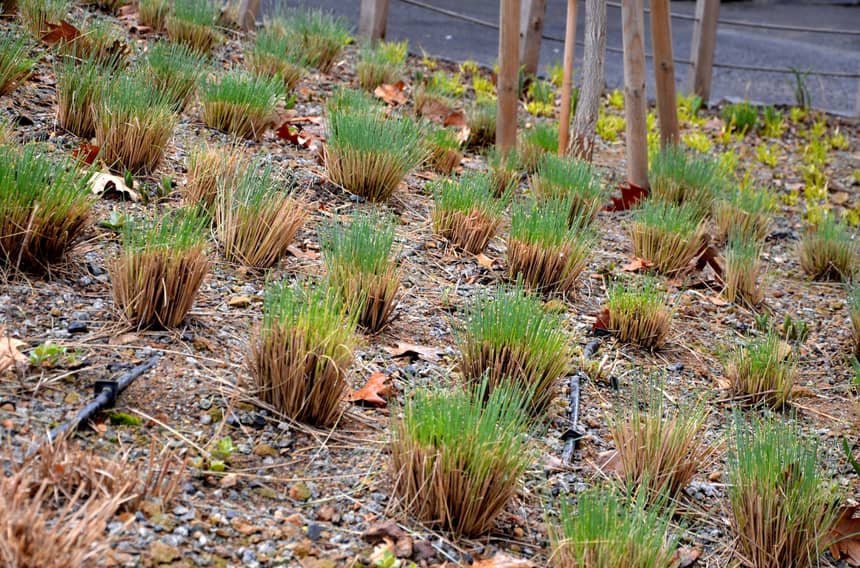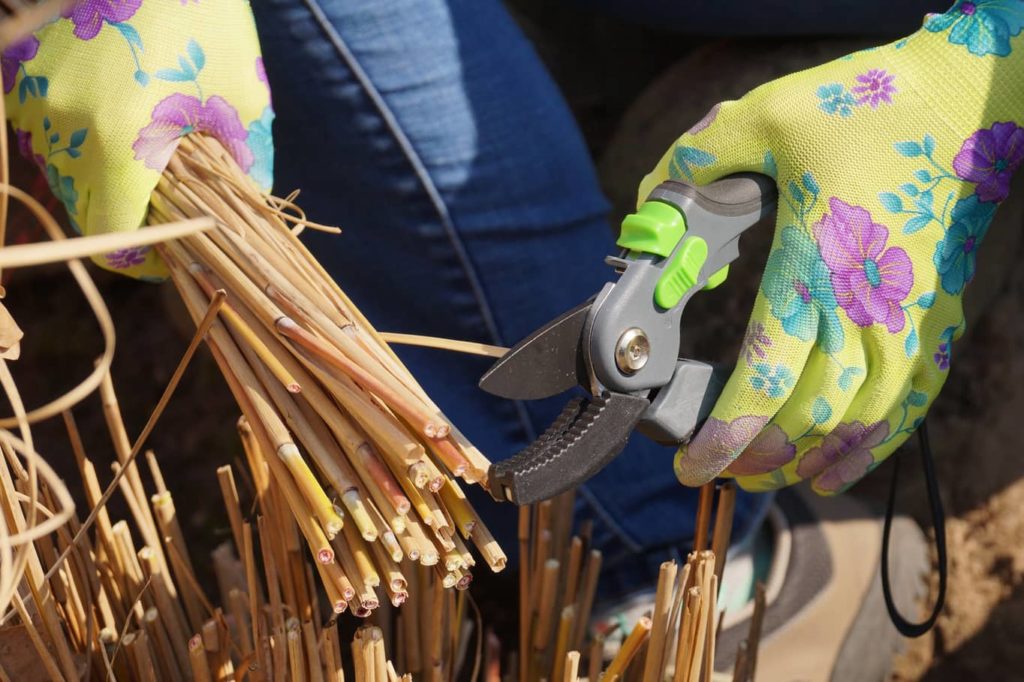
Ornamental grasses add a lot to a lawn. They have texture, flower spikes, color, and can create borders and these grasses usually are resistant to pests and diseases. Why is my ornamental grass turning brown? There are some basic gardening tips such as making sure you are not over watering, under watering, or knowing that the plants do go dormant in the winter.
Let’s take a look.

Requirements for Ornamental Grass
There are a few things you need to research.
- Hardiness zone and climate – research what will grow well in the area you live.
- Full sun or shade – depending on where you will be planting the grass, you need to know if it is an area that has full sun or partial shade. This will allow you to know which types will flourish in those areas. Most types love the full sun but there are some that do love the shade. Maiden grass, sea oats, and fountain grass love the partial shade.
- Well-drained soil – most varieties like this type of soil, while umbrella grass likes it more soggy.
Causes of Browning Tips and Fixes
- Not the right area to plant – wrong soil or climate
- End of the growing season so the plants go dormant in winter. To fix this, cut back the grass in the early months of spring. If you can cut back 6 inches from the crown, this is a good idea.
- Overwatering – allow time for the soil to dry between waterings.
- Underwatering – water during the dry weather days so the soil stays moist
- Too much fertilizer – instead of using chemicals, a fertilizer like Azomite that has trace minerals and vitamins, along with seaweed and kelp can help.
- Plants that are in pots – if the grass is root-bound, it can’t absorb water from the soil easily. Cut off the bottom inch of the roots system and then cut slits down the roots in the sides. You want the root system to be able to grow so make sure that there is enough soil that has loosened up two times the size of the root ball you have in the pot.
- Grass is in a hot area – if the sun is scorching the tips, move the potted plant or dig up the roots
- Insects on the grass – there can be insects on the grass that are attacking it. Two types of these are mites and aphids and they can cause the grass to die. These pests like the underside of blades. You can see the aphids with your naked eye, but can’t see the mites. However, you will be able to tell they are there by making the grass turn yellow. Also, you can get rid of these pests by watering more with a garden hose to make sure they are getting the water they need.
Here is a video about some of the problems with ornamental grasses.
Diseases Will Attack the Plants
There are some diseases that will attack the plants. Some of these are powdery mildew, rust, smut, grass, and anthracnose.
1. Powdery mildew – builds on plants that are in shady as well as warm and humid conditions.
2. Rust – taking a look at the blade of grass, you may see yellow or orange blisters. This is a disease that also is not good for the grass and can hurt it. One way to avoid this is to plant the grass farther apart from each other.
3. Anthracnose – This is a fungal disease and you will see lesions that form on the leaves. To avoid this from happening, allow proper circulation between the plants.
Types of Ornamental Grasses
There are a few types of ornamental grasses: Pampas grass, which needs trimming in the spring. Another one is Blue Fescue, which is a plant that needs dividing every 2-3 years. There are also some that are resistant to the brown growth:
- Purple fountain grass
- Karl Foerster feather reed grass
- Giant reed
- Northern sea oats

How to Prune the Grass
The plant can grow if it has older grass, however, the appearance is Improved when there is new growth in the warmer months. When you notice the ornamental grass turning brown, gather the blades of the leaves and put them into a ponytail hold. This allows you to cut the leaves easily. Do this when the plant is dormant. Using pruning shears , cut the grass back and take out enough growth to make up 4 – 6 inches from the ground.
Recommended Maintenance
While you are tending to your ornamental grass and trying to keep it from turning brown, also take a look at when the mosquitos are the most active. You can do this by making sure that water is not pooling in the yard and also that you are keeping your gutters clean.
Another area to pay attention to is moles in the yard. Moles actually are good for the yard, contrary to what your neighbors might think. They eat the insects and aerate your lawn, but unfortunately, can take over your yard. This is when you will want to contact a professional to help control them.
Lastly, when you are outside, you might find you are bitten by a bug. Often it is probably a mosquito or an ant. But if you see termites near the home, you might wonder if it could be a bite from one of those pests. The good news is, probably not. Termites don’t usually bite humans as they like wood and plant-based materials.
When to Call a Professional
If you are not sure how to pick out the right plants for your yard, or your ornamental grass is turning brown, calling on a landscaping professional is best. They can help you find the right ones for your climate and zone. The last thing you want to do is purchase plants that look nice but won’t grow and give you a headache. Also, if you find pests on your plants, call on your local pest control service to help eradicate them.
Conclusion
Everyone wants to have a yard that has beautiful landscaping. If you have problems with pests on your grasses or need help figuring out which grasses belong, hire a pest control company that knows about ornamentals and uses methods that are environmentally friendly.
Call Honor Services to assist you with some pest control recommendations while conducting a thorough pest inspection in Melbourne, FL, and surrounding areas.



